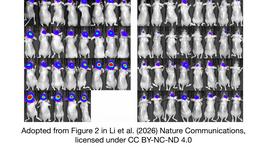CRISPR Screens Identify Vital lncRNAs
CMN Intelligence - The World’s Most Comprehensive Intelligence Platform for CRISPR-Genomic Medicine and Gene-Editing Clinical Development
Providing market intelligence, data infrastructure, analytics, and reporting services for the global gene-editing sector. Read more...
The researchers at New York University explored how the loss of over 6,000 human lncRNAs impacted cellular fitness in HEK293FT and four cancer cell lines. The massively parallel screens utilised RNA-degrading CRISPR-Cas13 and 75,000 gRNAs to precisely knock down lncRNAs without disrupting DNA regulatory elements and thereby leaving nearby protein-coding genes unaffected.
Results revealed 778 essential lncRNAs, with 46 showing universal essentiality and over 700 with cell-specific roles. Essential lncRNAs were associated with cell cycle regulation and apoptosis pathways, often showing enriched expression in early developmental stages and specific tumours.
Data from nearly 9,000 primary tumours were analysed to assess the expression levels of essential lncRNAs and their correlation with patient survival. This approach led to the identification of lncRNAs that correlate with cancer progression and patient survival rates and, thereby, might serve as potential biomarkers or therapeutic targets.
The study revealed a low correlation in essentiality between lncRNAs and adjacent protein-coding genes, thereby challenging the common assumption that lncRNAs mainly function by regulating nearby genes. Instead, lncRNAs serve independent regulatory roles with distinct, autonomous functions.
The study was led by Neville Sanjana at the New York Genome Center and New York University, and it was published yesterday in Cell.
To get more CRISPR Medicine News delivered to your inbox, sign up to the free weekly CMN Newsletter here.
Tags
CLINICAL TRIALS
Sponsors:
Base Therapeutics (Shanghai) Co., Ltd.
Sponsors:
Base Therapeutics (Shanghai) Co., Ltd.







